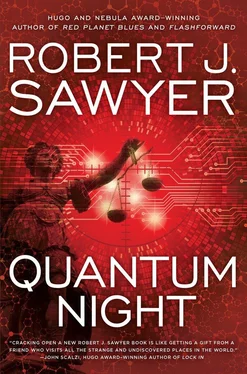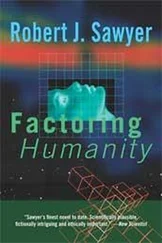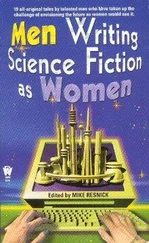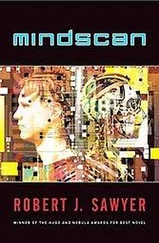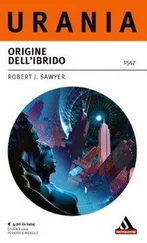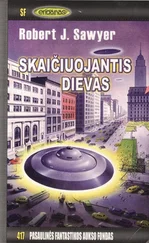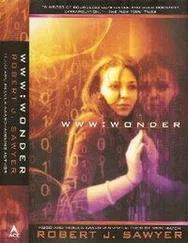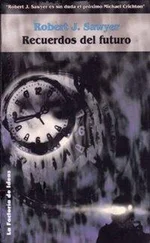But there was one drawer left, and so I opened it—and found it crammed with old VHS videocassettes. Seven were labeled “Altruistic Behaviour Study 1988,” one was labeled “Teaching Company Audition,” and five were labeled “APA AGM 1994.” But there was one that had me salivating: the sticker on its spine said, “Lucidity Subject JM,” who doubtless was me—the time-honored custom of referring to patients and experimental subjects by their initials, as if that afforded real anonymity. I took that cassette, headed out of Menno’s office, being careful to turn the lights back off—not that Menno would notice—and drove to my condo, five minutes away.
I hadn’t used my VHS player in years, and was relieved to find it still worked. I looked so young! And so did Menno—and it was startling to see him back before he’d lost his sight; I’d forgotten how expressive his eyes had been. “Let me just identify this recording,” he said in a sibilant voice that was a tad more energetic than it was today. He cleared his throat. “January sixteenth, 2001. Subject JM.”
My heart skipped a beat: footage of me from the beginning of my dark time! Still, that made sense: yes, I’d been involved with Lucidity in 2000, but I couldn’t recall doing any interviews, or, for that matter, why one would bother to interview people about fairly boring hearing tests, or whatever the heck it had been? I wondered what had moved Menno to start doing them at this point.
He leaned back in his chair. “Thanks for coming in, Jim.”
“My pleasure.”
“So, I’m just going to ask you a few questions, if you don’t mind.”
“Be my guest.”
“How have you been? How do you feel?”
“Fit as a fiddle,” I said. “Right as rain.”
“Good, good. Your classes are going okay?”
“Yes. I’m enjoying them all.”
“And what about participating in this study? Have you been enjoying that?”
“Sure. And, you know, as a student, I can always use the extra cash.”
“I’m sure,” said Menno. He moved his chair closer to mine. “And how do you feel compared to before you became one of our experimental subjects?”
I saw myself blink three times rapidly. “The same,” I said. “Why? Shouldn’t I?”
There was something flat in Menno’s tone. “Yes, of course.”
The interview lasted seven minutes, according to the timecode running along the bottom of the screen. It was followed by the next one, exactly one month later, on February 16, 2001, which was pretty much the same, although my birthday had passed two days before, meaning I was now twenty.
The one for March 16, 2001, was similar, too. Kayla and I had recently started dating. I talked about how we’d gone to Pop Soda’s the night before and listened to some live jazz; not fancy, but within our student budgets. Other than that, my response to all the questions he asked was the same mixture of clichés, platitudes, and banalities that had filled the previous interviews, and, as I soon discovered, filled the next two, as well. I was fine, chugging along, keeping my head above water, hanging in there.
But the final monthly interview, conducted on Monday, June eighteenth—the sixteenth having fallen on Saturday, it seems—was radically different in tone.
“This is just like the other times, okay?” said Menno. “A routine evaluation; same questions as always.”
I had arms crossed in front of my chest. “Yeah, okay. Let’s get it over with.”
“Tell me how you feel today, Jim.”
“Fine.”
“You’re happy?”
“I’m okay, yeah.”
“Healthy?”
“Sure. Yeah.”
“How are things with Kayla?”
I—the one here in 2020—shifted on my living-room couch; the other me, back in 2001, sat motionless. “They’re fine.”
“You’ve been going out for over three months now.”
“Yeah.”
“And how do you feel about her?”
“She’s okay.”
“Just okay? Do you love her?”
“Sure. She’s great in bed.”
“I mean, do you have feelings for her? Romantic feelings?”
“She’s a good lay. And she looks good, y’know? Impresses the other guys, me being with her.”
“And that’s important?”
“Course. Gotta be seen to be on top, man. The king. Gotta be in control.”
I paused the playback and looked at the image of myself frozen on the screen. I would have sworn up and down that I’d never talked about a woman that way before in my entire life; I wouldn’t have believed it if—well, if it wasn’t right here, on video, in front of me. My stomach was knotting, and I tasted acid at the back of my throat.
I let the playback resume. There was silence for a long moment—I thought I must have accidentally muted the sound—but it was just Menno digesting what I’d said, apparently, because at last he spoke again. “What about your sister? Heather, is it? How do you feel about her?”
“She’s all right.”
“Anything else you want to say about her?”
“I keep in touch. Make her think she’s important, y’know?”
“Why?”
“She’s a soft touch.”
“For money, you mean?”
“Yeah, for money. She’s a lawyer now. Deep pockets.”
I sagged back into my couch, numb. What the hell had happened to me back then?
YouTube has countless films of psychological experiments, and I often used the ceiling-mounted projector to show them to my students. One of my favorites is the Heider and Simmel animation from 1944, which starts by showing a large hollow square with a black triangle inside it. Soon one side of the square hinges open, and the triangle moves out. A smaller black triangle and a small circle move in from the right side of the frame. The three solid shapes slide around the screen, sometimes touching, while the hinged square periodically flaps open and closed.
I remember when I first saw that cartoon myself as an undergraduate in Menno Warkentin’s class. He asked us to write down what had happened in the film. I’d said the large triangle was a monster unleashed from a cage to chase off a boy and a girl who were out exploring; the boy—yeah, back then, my consciousness about gender-role stereotypes hadn’t yet been raised—bravely fought off the monster, while the girl snuck into the big square to steal treasure; eventually, the boy and girl escaped, and, in a fit of anger at having been bested, the monster destroyed its cage.
My response was typical if idiosyncratic. Others had seen mating rituals, battlefield maneuvers, or slapstick comedies—but we’d all experienced some sort of story. When Heider and Simmel first did this test, only three of their hundred and fourteen subjects dispassionately described what the film actually depicted: two squares and two triangles moving about an empty space. Everyone else constructed a narrative, pretty much out of whole cloth.
As always, my own students did not disappoint. Boris, in the front row, said, “It’s a political allegory, right? The big triangle, that’s the United States. And Mexico, that’s the little triangle. The flapping box represents the border, sometimes open and sometimes closed, and in the end, by trying to keep everyone out, the US ends up destroying itself.”
You could hear the crickets in the room; nobody else had seen anything quite like that, I guess.
I let a few more people share their interpretations—which ranged from bawdy to rom-com treacly to shoot-’em-up mayhem worthy of Liam Neeson—and then I got down to the point.
“There’s a word for what all of you have just done. It’s confabulation. We tell ourselves stories, building them out of almost nothing, then convince ourselves they’re true…”
Читать дальше
